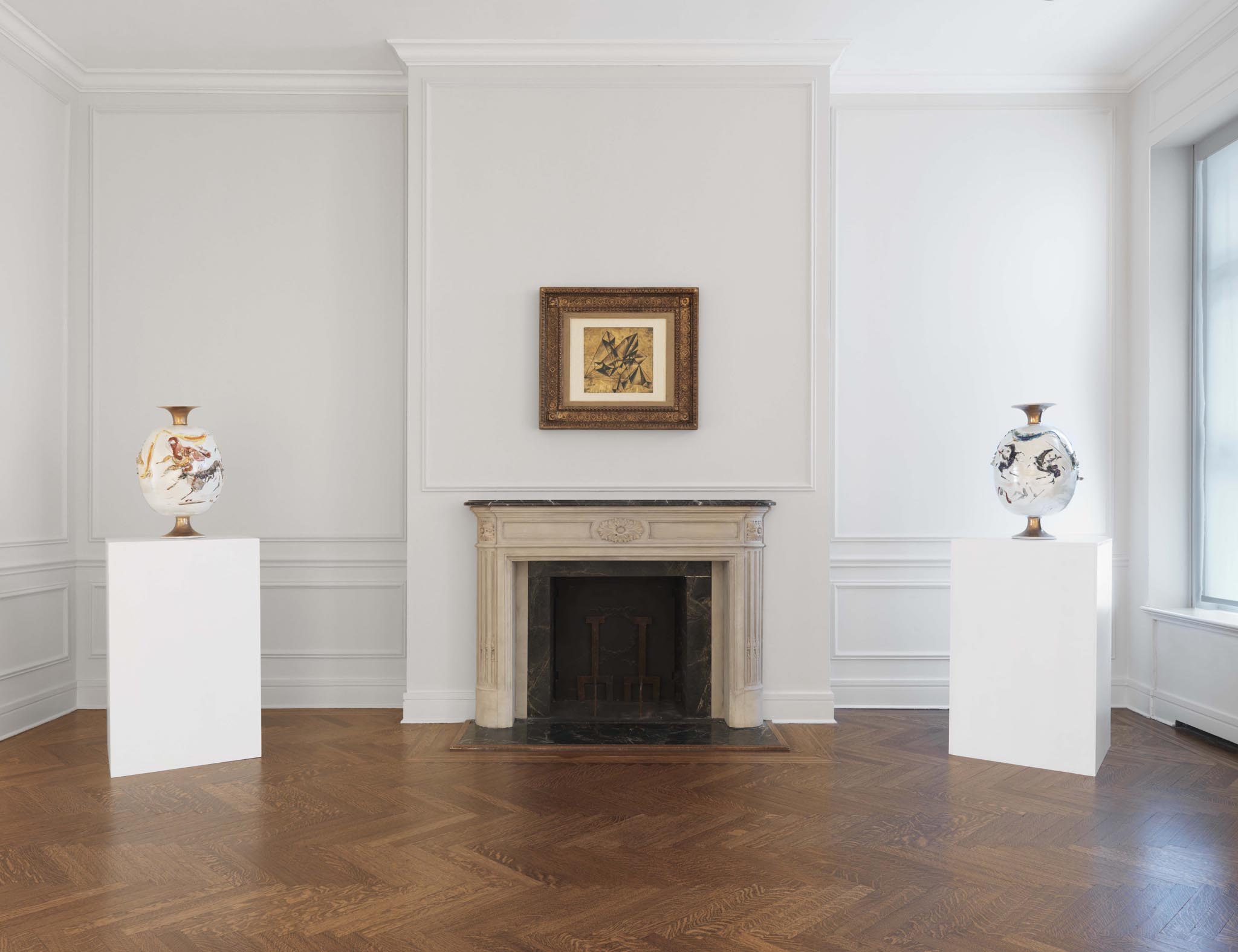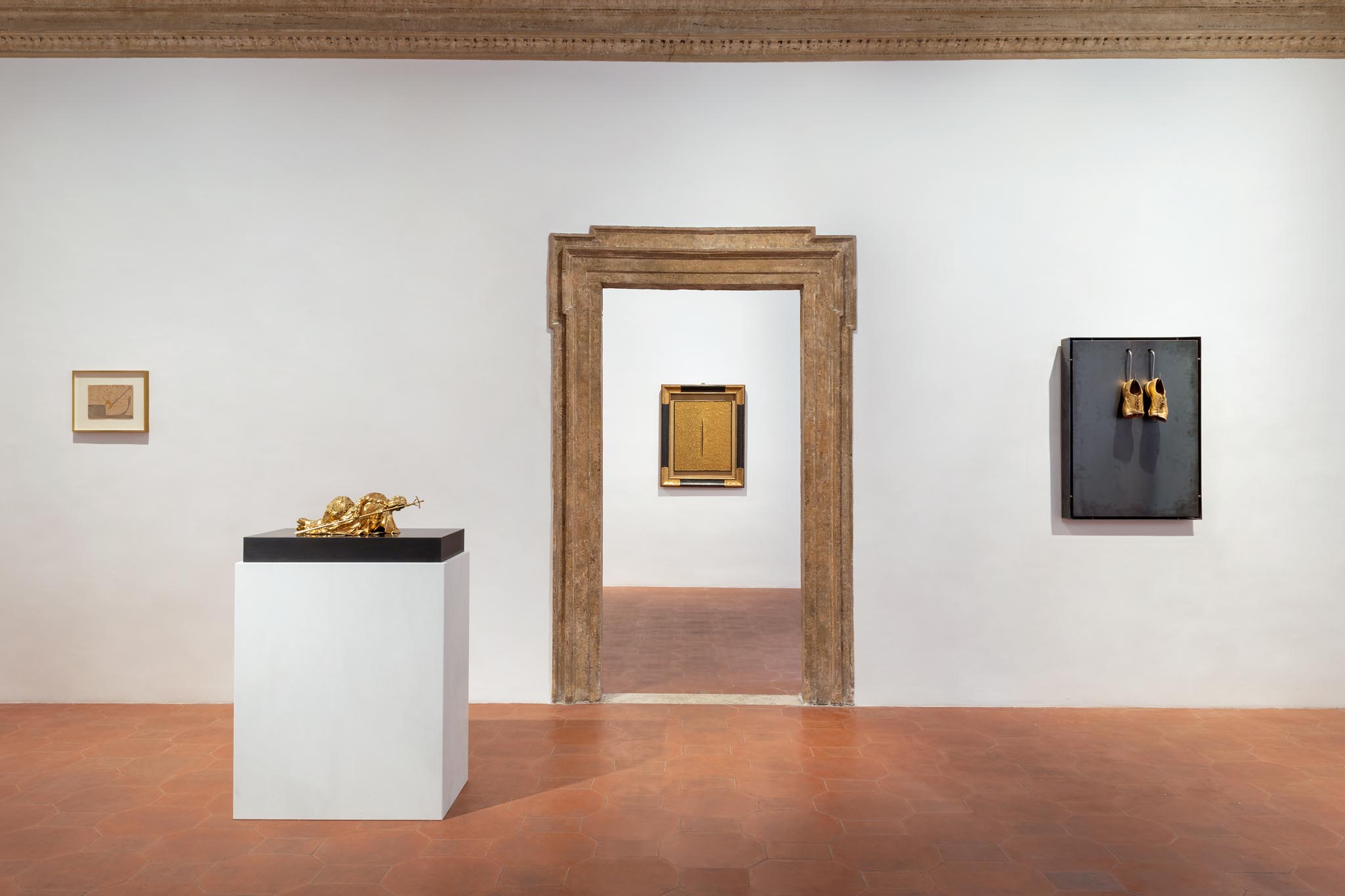Enrico Castellani (Castelmassa, 1930 – Celleno, 2017) was born in Castelmassa, in the province of Rovigo. After enrolling at Brera Academy of Fine Arts, he moved to Brussels in 1952, where he studied architecture at the École Nationale Supérieure de la Cambre. After graduating in 1956, he returned to Italy and settled in Milan, where he began working at an architectural firm.
In Milan, Castellani met Piero Manzoni, sparking a deep artistic collaboration and lasting friendship. Manzoni introduced him to the principles of the Dutch Group Zero, and together they participated in numerous group exhibitions, gradually developing a shared visual language. After his early artistic experiments—initially influenced by American Action Painting and artists like Mark Tobey—Castellani began to shape his own distinctive, minimalist style.
In 1959, he presented his first relief surfaces: monochrome canvases transformed by techniques such as the use of nails and internal supports to create light-and-shadow effects—which he referred to as “different repetitions.”
Between 1958 and 1959, Castellani, Manzoni, and Agostino Bonalumi exhibited their works at notable galleries including the Prisma Gallery in Milan, the Galleria Appia Antica in Rome, and Galerie Kasper in Lausanne. During this time, the trio engaged in a deep rethinking of their artistic practice, marked by a commitment to both critical reflection and artistic activism.
A pivotal moment came on September 3, 1959, when Castellani and Manzoni founded the magazine Azimuth, which they operated from Manzoni’s home in Milan and printed at Antonio Maschera’s print shop. Just two months later, they opened the Azimut Gallery in Milan, offering a self-managed space for artistic experimentation and avant-garde innovation. In 1960, Castellani held his first solo exhibition at the Azimut Gallery. That same year, he took part in the group show Monochrome Malerei at the Städtisches Museum in Leverkusen.
In 1962, he continued his artistic journey with group exhibitions in Brussels and at the Stedelijk Museum in Amsterdam, where he contributed to the Nul Movement. He participated in the XXXII Venice Biennale in 1964, exhibiting alongside other leading contemporary artists. Two years later, he returned to the Biennale with a solo presentation.
Over the years, Castellani took part in numerous important international exhibitions, including: The Responsive Eye, MoMA, New York (1965), The 8th São Paulo Biennial, Brazil (1965), Vitality of the Negative in Italian Art, curated by Achille Bonito Oliva, Palazzo delle Esposizioni, Rome (1970), Identité Italienne: L’art en Italie depuis 1959, curated by Germano Celant, Centre Pompidou, Paris (1981), Programmed and Kinetic Art 1953–63, Palazzo Reale, Milan (1983) and The Italian Metamorphosis, Solomon R. Guggenheim Museum, New York (1994).
In the 2000s, Castellani’s work was featured in major shows at both private galleries and public institutions. In 2001, he participated in the group exhibition Matter/Nothing, curated by Luca Massimo Barbero at the Bevilacqua La Masa Foundation in Venice. That same year, his work was shown in Italian Belvedere: Trend Lines in Contemporary Art 1945–2001 at the Centre for Contemporary Art in Warsaw, curated by Achille Bonito Oliva. Also in 2001, the Fondazione Prada in Milan hosted a major retrospective curated by Germano Celant. Four years later, in 2005, Bruno Corà curated an exhibition dedicated to Castellani at the Pushkin Museum in Moscow.
After a lifetime of artistic achievements and recognition, Enrico Castellani passed away on December 1, 2017, in Celleno, in the province of Viterbo.

